In my father’s photo collection, there are a series showing a rather misty location in London, looking over the remains of a bombed square. These are some of the earliest photos and the negatives are not in the best condition and were probably from the winter of 1946/47.
I must admit I had not studied these in detail, there was no obvious feature and I included one of the photos in a post covering mystery locations and this was about the only one that was not identified.
I looked at these again recently and the location should have been really obvious – it was my own fault for not looking close enough.
Firstly, let me set the scene. The following map shows the location today. The station in the middle of the map is St. Pancras Station. The green space to the left of the rail tracks at the top is the location of St. Pancras Old Church. Pancras Road runs to the left of the church down towards the station and to the left of this is Purchese Street.
The same area from the 1940 Bartholomew Atlas of Greater London. St. Pancras Station is without the recent extensions for the Eurostar trains to the Channel Tunnel. There is a Gas Works between the rail tracks leading into both St. Pancras and Kings Cross Stations. Between Pancras Road and Purchese Street is an L.M.S. Coal Depot.
Having set the scene today and in 1940, here are the photos.
The first is the photo that enabled me to identify the location. On the right of the photo in the distance, behind the trees is a church. The distinctive tower of the church is that of St. Pancras Old Church. Look closely at the church and the results of wartime bombing can be seen with the damaged roof.
I took the following photo from Purchese Road, and the lack of a view across to the church today makes it impossible to get to the exact same spot however the view is from roughly the same spot today.
I believe my father then turned towards St. Pancras Station and took the following photo. The gas holders that are shown in the 1940 map can be seen. The wall running from the right to just left of centre is I believe the wall of the L.M.S. Coal Depot. This is the black line running between Purchese Street and Pancras Road in the 1940 map.
I am not sure when the L.M.S. Coal Depot was built, but it was after 1895 as the Ordnance Survey map from 1895 shows the area occupied by houses. This also shows the Gas Works along with an example of the many street name changes that have taken place in London across the years, In 1895 it appears that Purchese Street did not exist. Goldington Street and Brill Street were the names allocated to this length of street and in the 1940 map, part of Goldington Street and Brill Street appear to have become Purchese Street. This area went through significant change between 1895 and 1940 with the construction of the Coal Depot and further down the L.M.S. Goods Depot.
A slightly different view to the above, looking towards the Coal Depot. There are signs on each side of the square on the left, it would be really interesting to know what was written on these signs, unfortunately my father did not take a photo of these.
Again, impossible to place the exact location, however the photo below shows the view along Purchese Road looking towards where the L.M.S. Coal Depot would have been.
The following photo was taken looking towards Pancras Road with the wall of the Coal Depot on the right.
Another view similar to the above, but looking at the Coal Depot wall. The area on the left of the above and below photos shows the state in which cleared bomb sites were left.
After Purchese Street, i walked over to St. Pancras Old Church. This is the view from the churchyard looking across Pancras Road to the area in my father’s photos. Now very different.
The site of St. Pancras Old Church is very old. The website of the church states that although difficult to verify, it is believed that it first became a site of Christian worship in 313AD. The book St. Pancras Through The Centuries published in 1935 includes a chapter on the church which explains that the church was built on the site of a pagan “compita” – a rural shrine erected at cross roads in villages.
The site of the church is on a raised area of ground. The River Fleet, (or Holeburne or Holbourne as this tributary of the Fleet was once known) once flowed along the western edge of Pancras Road which would have been at the base of the raised area on which the church was built.
In 313AD, the right of religious freedom was restored in the Roman world which may be why the church website attributes this year to the possible earliest Christian church on the site. There is very little to verify the history of the church in these centuries however a 7th century altar stone has been found in the church and when the old tower was pulled down during rebuilding of the church in 1847-8, Roman bricks and tiles were found in the base of the tower and the lowest courses of the church walls.
The Rev. J. Carter Rendell describes some finds in his book “Story of St. Pancras Old Church” – “When the old tower of the church was taken down in 1847-8 a stone was found buried under it that had once been part of an altar. It is marked with five crosses, and is made of Kentish rag stone hollowed out under for the relics of a saint which are now missing. The form of the crosses is unlike any other but that on the tomb of Ethne who was the mother of St. Columba (died 597). So here is a relic of an altar made in the year 625.”
It is easy to believe that this is an ancient site when standing looking up at the church on the mound and imagining the River Fleet running along the base of the mound.
The church and tower – a much clearer view than in my father’s post war photo from Purchese Street.
For centuries, St. Pancras Old Church was in a very rural location. The following prints (©Trustees of the British Museum) from the 18th and 19th centuries show the church surrounded by countryside. This print is “A View of St. Pancras Church” from 1752.
A closer view of the church showing the ground sloping away towards what is now Pancras Road – “A South View of the Church of St. Pancras in the County of Middlesex” from 1790.
And finally, highlighting the history to be found in the area to the south of the church, St. Pancras Wells with the church in the background from 1853. The new railway would soon be changing this view significantly
The isolation of St. Pancras Old Church is illustrated by the following description of the church in John Norden’s Speculum Britanniae from 1593. “Pancras Church standeth all alone as utterly forsaken, old, and weatherbeaten, which for the antiquitie thereof, it is thought not to yield to Paules in London; about this church have bin manie buildings, now decaied, leaving poore Pancras without companie or comfort; yet it is now and then visited with Kentish towne and Highgate which are members thereof; but they seldome come there, for that they have chappels of ease within themselves, but when there is a corps to be interred, they are forced to leave the same in this forsaken church or churchyard, where (no doubt) it resteth as secure against the day of resurrection as if it laie in stately Paules.”
The reference to Kentish Town and Highgate refers to mass being held in these locations for the majority of Sundays in the month with only one Sunday a month in St. Pancras.
The church does not feel very isolated today with trains running close by, to and from St. Pancras Station, a busy road at the base of the mound leading up to the church and housing estates now occupying the areas where the Coal and Goods Yards once stood.
Close to the entrance to the church is the splendid gothic style Burdett-Coutts Memorial Sundial. Designed by George Highton of Brixton it was unveiled in 1879 by Baroness Burdett-Coutts.
Baroness Burdett-Coutts was the youngest granddaughter of Thomas Coutts, one of the partners of Coutts Bank. When Thomas died his estate passed to his wife, Harriot and when she died in 1837, the interest from a Trust and a 50% share of Coutts Bank passed to Angela Burdett with the condition that she also take the name Coutts, so at the age of 23 she became Angela Burdett-Coutts and also the richest woman in the country, with the title of Baroness coming later.
Burdett-Coutts gave a considerable amount of her time and money to philanthropic activities aimed at helping the poor. This included the building of the Columbia Road Market in Bethnal Green which helped support small traders and provided the poor of the area with a place where they could buy food at reasonable prices.
She funded the construction of the memorial sundial in the churchyard to record the names of many of those who had been buried in the area of the churchyard that was being used for the railway.
Burdett-Coutts died in 1906 at the age of 92 and is buried in Westminster Abbey – a fitting place as she had given away some £3 million of her money (this was the value in the 19th century, it would be a considerably higher sum now).
The majority of the old churchyard is now grass following work in the 19th century to turn the churchyard into gardens. A few memorials remain including the one shown in the following photo. This is the mausoleum of the architect Sir John Soane and his family.
Sir John Soane was the architect of the Bank of England and Holy Trinity Church on Marylebone Road. The mausoleum was built in 1816 following the death of his wife in 1815. The design of the central feature of the mausoleum influenced Sir Giles Gilbert Scott in his design of the K2 telephone box. The mausoleum is now Grade I listed, such is its importance.
The original large churchyard around the church served St. Pancras and St. Giles-in-the-Fields. It must have been the burial-place for many tens of thousands over the centuries but was closed in 1854. Soon after, a large part of the churchyard was taken over for the construction of railway lines into St. Pancras Station. This involved the exhumation of many old burials and removal of the gravestones and tombs.
The supervision of much of this work was carried out by the author Thomas Hardy. This was before he had started writing full-time and was when he studied architecture under a Mr Arthur Blomfileld of Covent Garden between 1862 and 1867.
This work involved the removal of bodies, headstones and tombs and some of the headstones were placed in the remaining part of the churchyard where an Ash tree has since grown in amongst the headstone.
The church was damaged during the war and restored in 1948 with a later restoration between 1978 and 1980. The view on entering the church.
The full view looking down towards the altar.
The Grey Monument.
The monument is from the 16th century, possibly around 1530. The outlines on the rear of the monument were occupied by brass inlays which are now missing. They are believed to have shown the figure of a woman and her two husbands, her two sons and five daughters by one husband and three sons and three daughters by the second husband.
Other monuments in the church include the Offley family monument from the 1680s and includes their 18 children, a monument to Daniel Clarke from 1626 who was Master cooke to Queen Elizabeth and King James and an early 17th century stone curtained recess that reveals an Elizabethan woman with a baby.
View of the church looking down towards the entrance.
St. Pancras Old Church is possibly one of the earliest sites of Christianity in the country with a much earlier history as a pagan / Roman shrine. Surviving through centuries of isolation, the church has now to contend with the encroachment of roads and railways, but is still an atmospheric and lovely place to visit. As with my last week’s post on All Hallows by the Tower, I was the only visitor.
As I walked back to St. Pancras Station, I passed the new building of the Francis Crick Institute which had only just opened.
In this small area there is one of the earliest church sites in the country which may also be on the site of a much earlier pagan shrine, a new building housing the very latest in biomedical research, close to the British Library, all next to the magnificent architecture of St. Pancras Station which is also the terminal of a train service running under the channel to Europe – this continual development and diversity, but with very deep historic roots is why I continue to find London so fascinating.

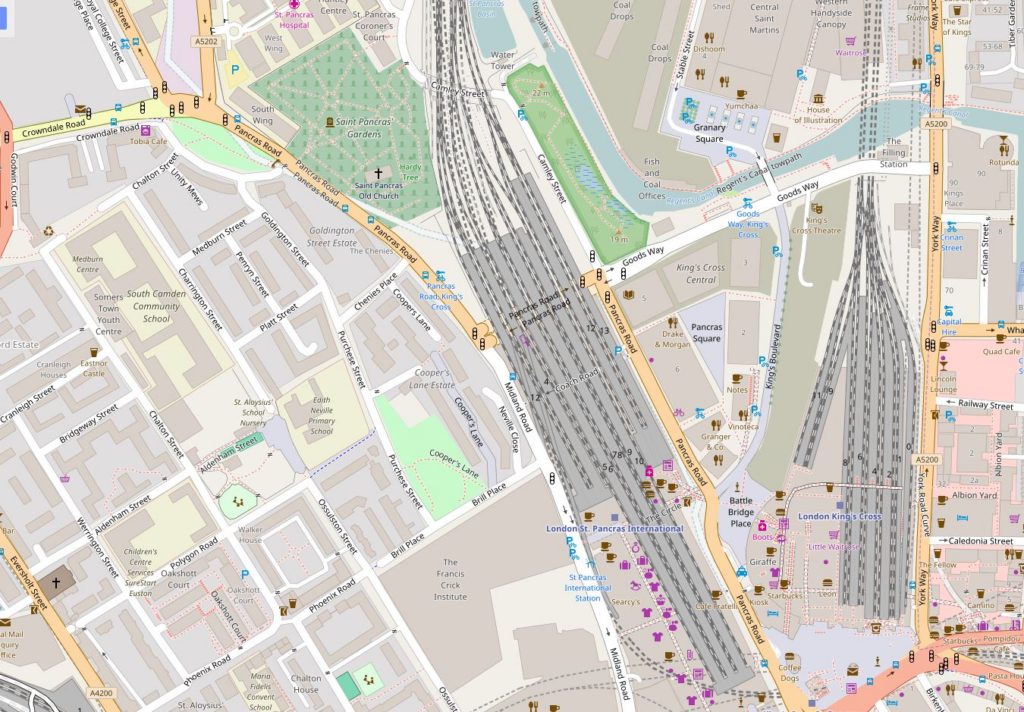
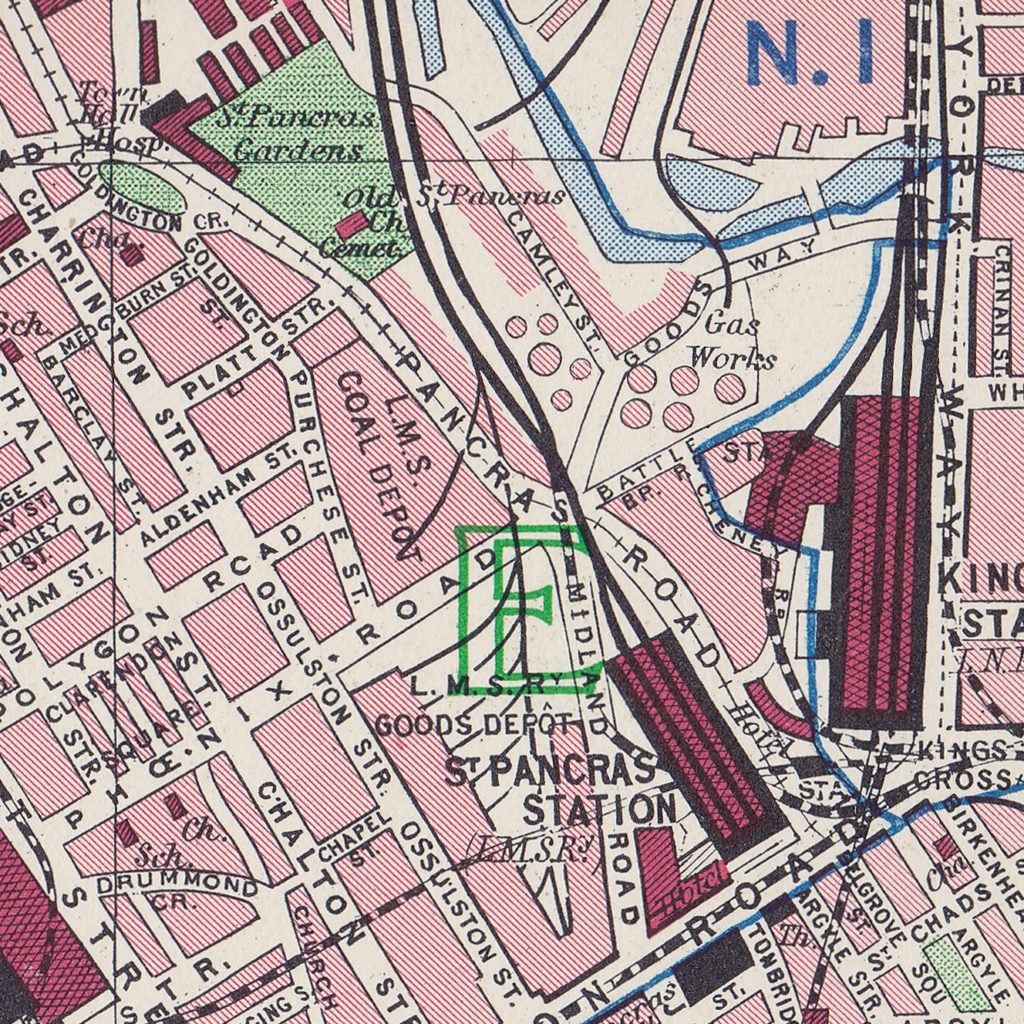
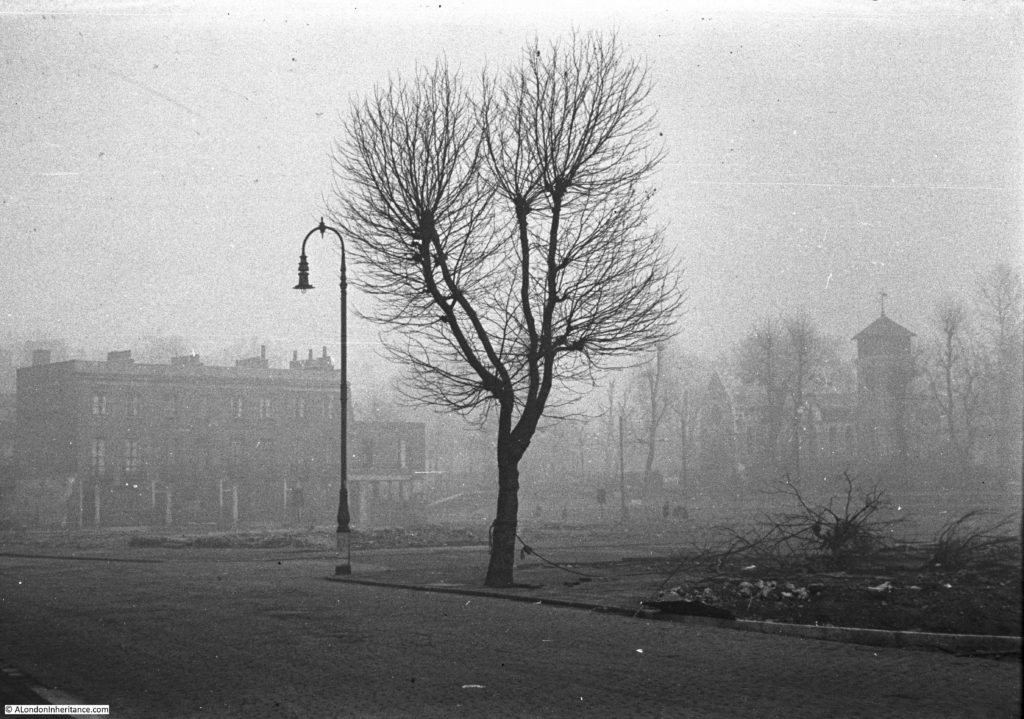
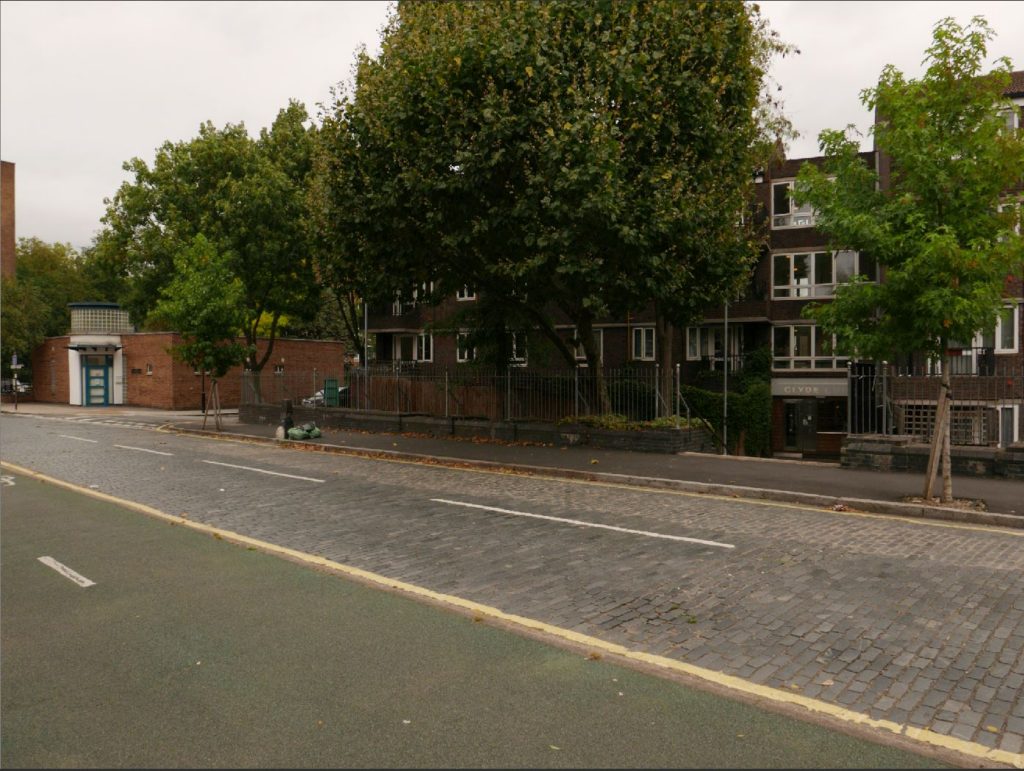
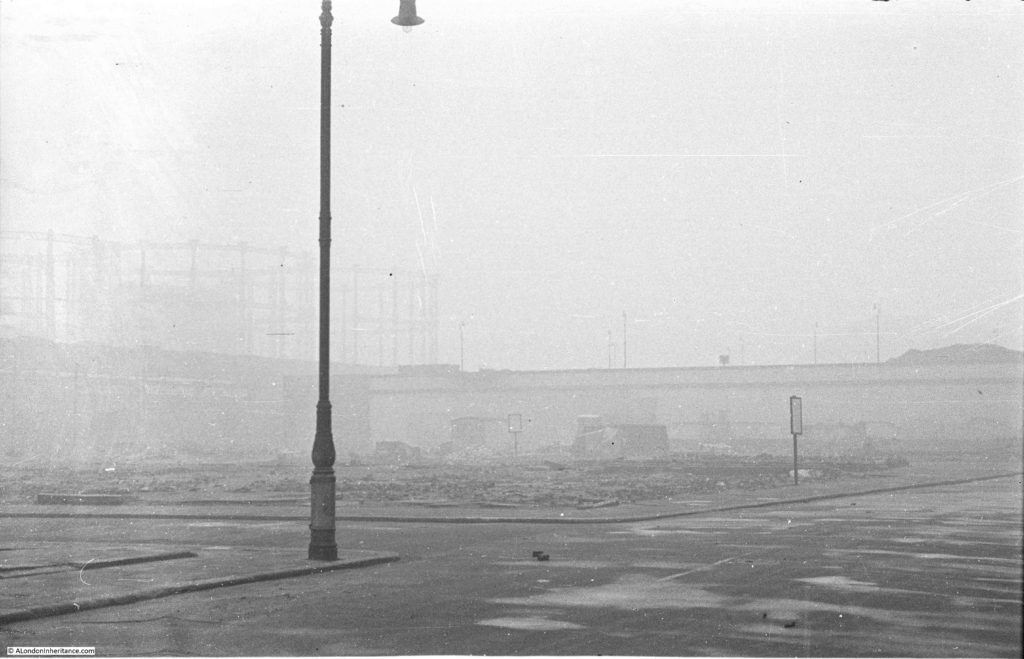
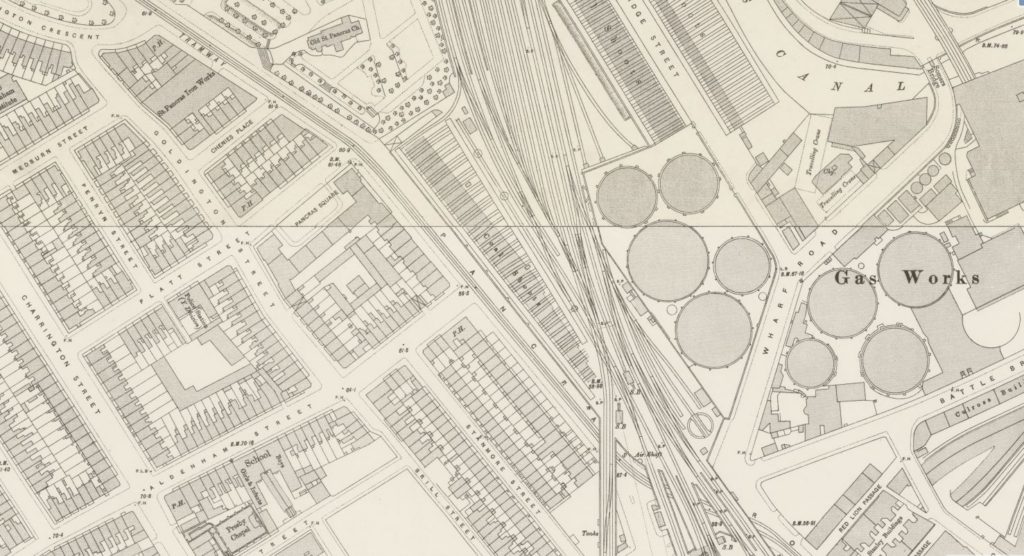
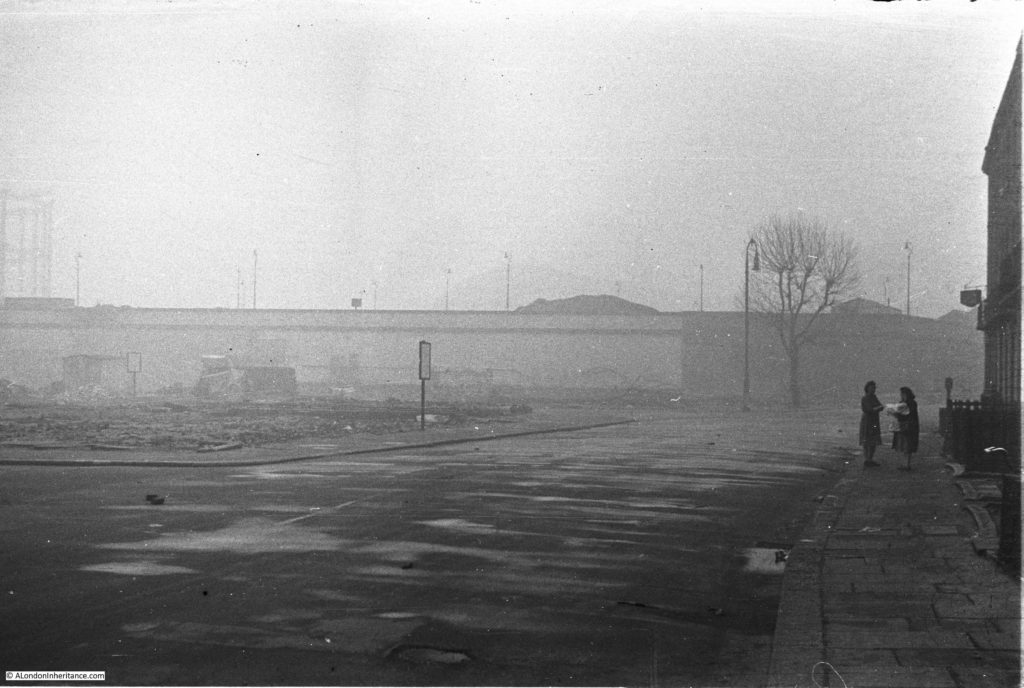
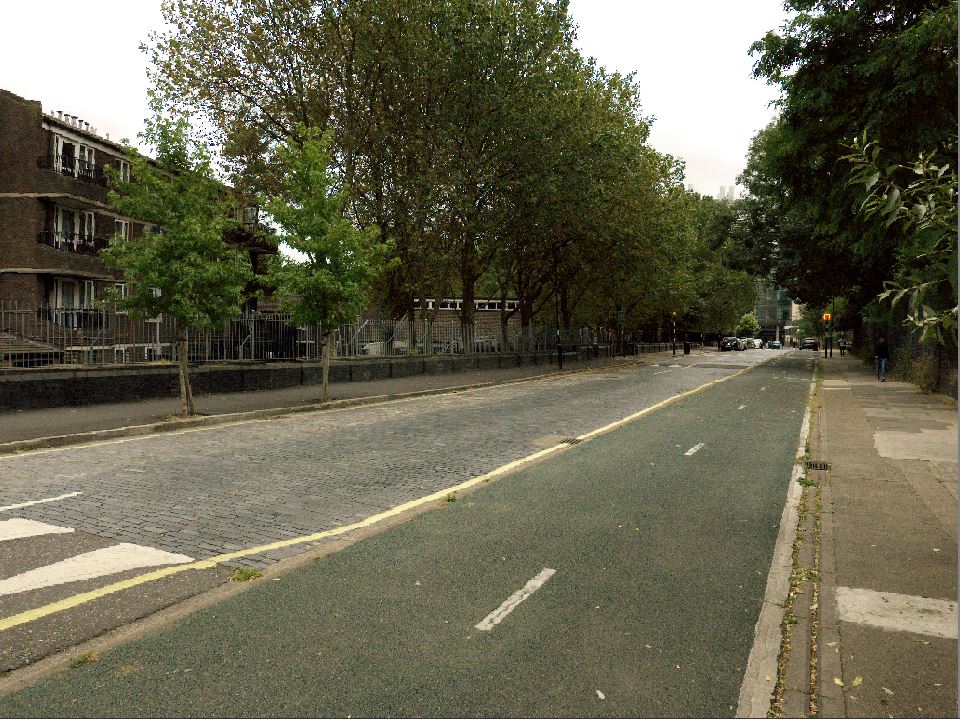
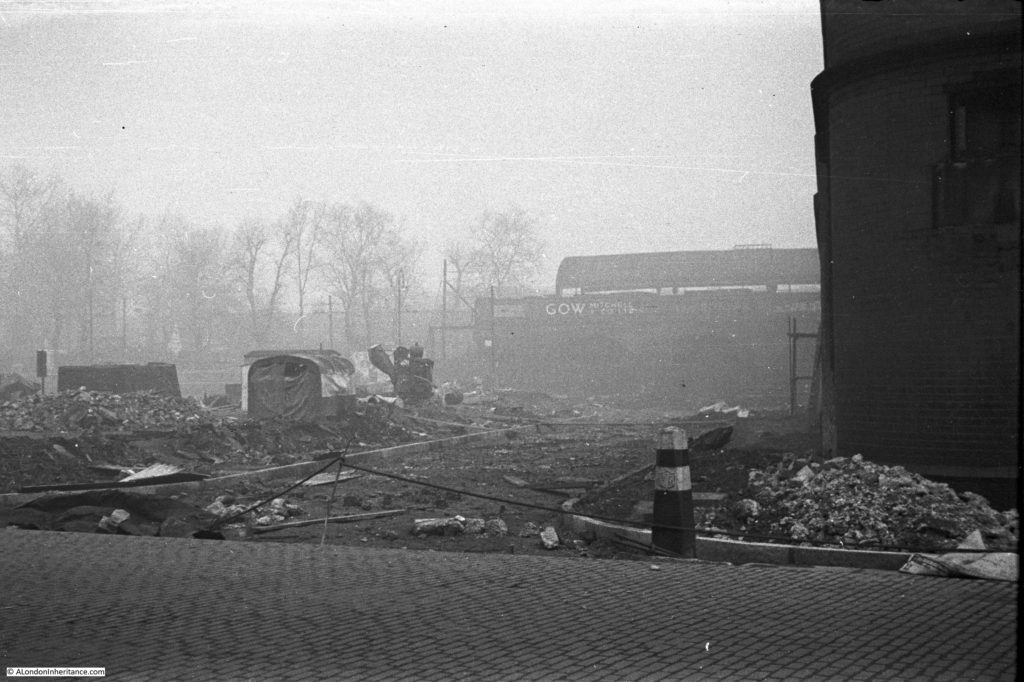
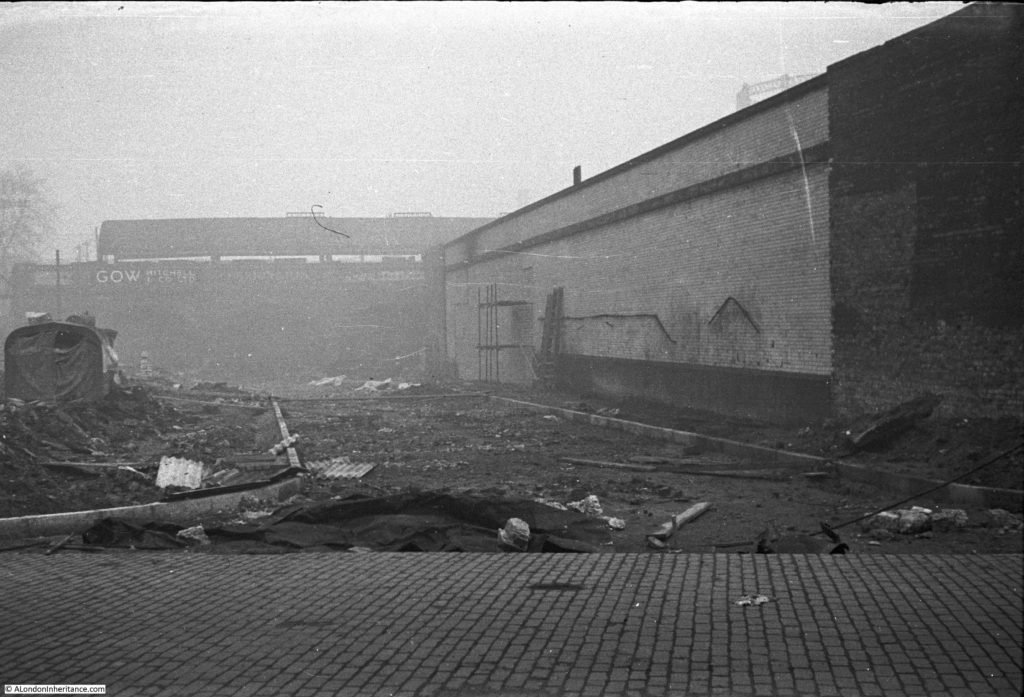
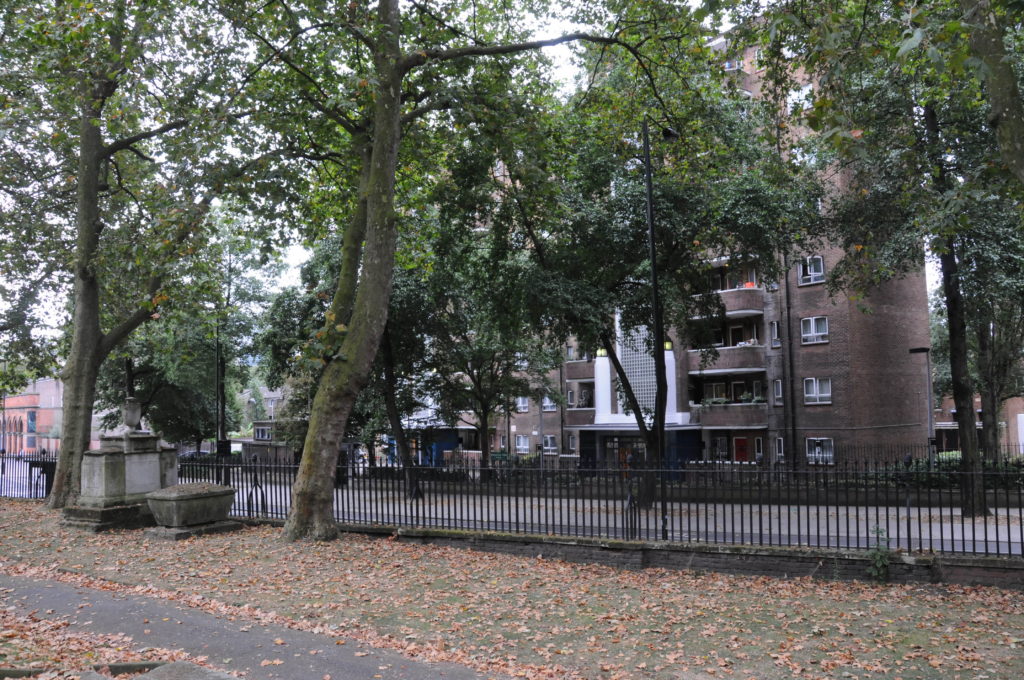
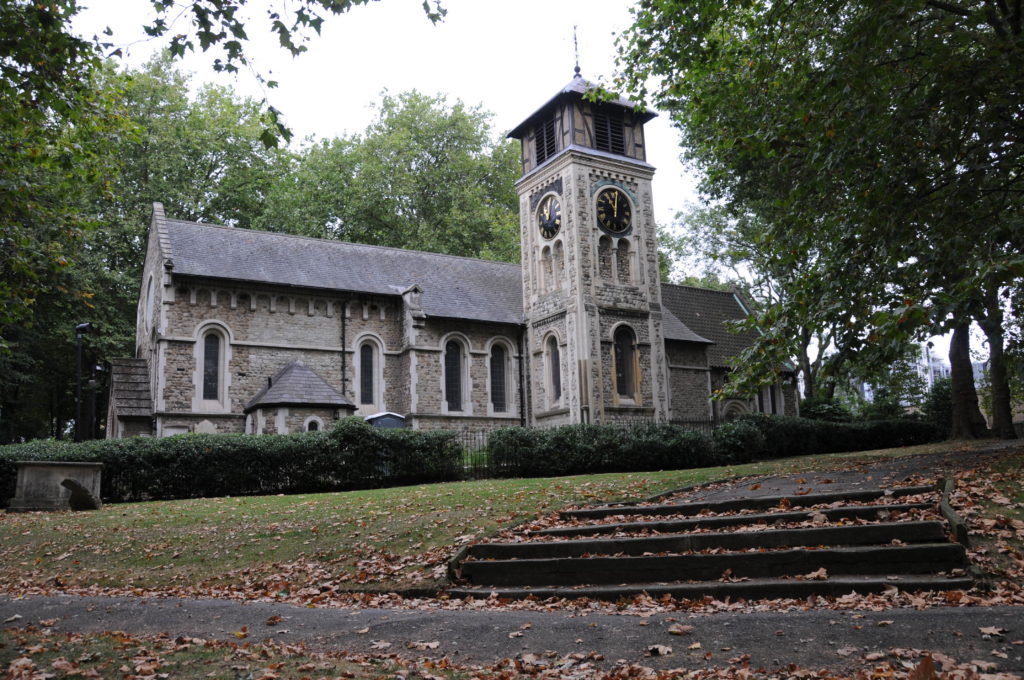
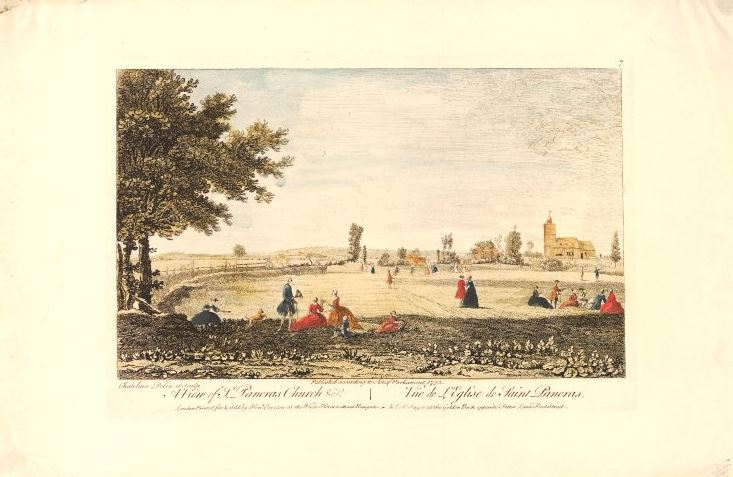
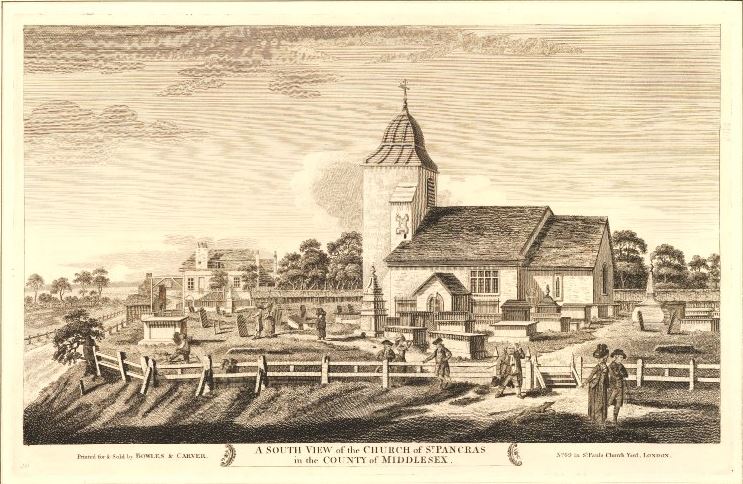
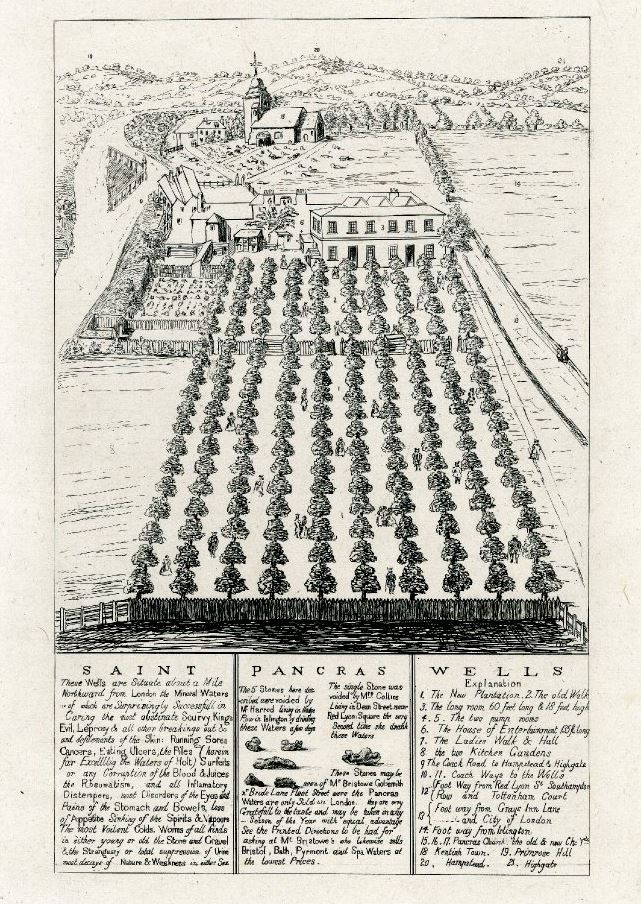
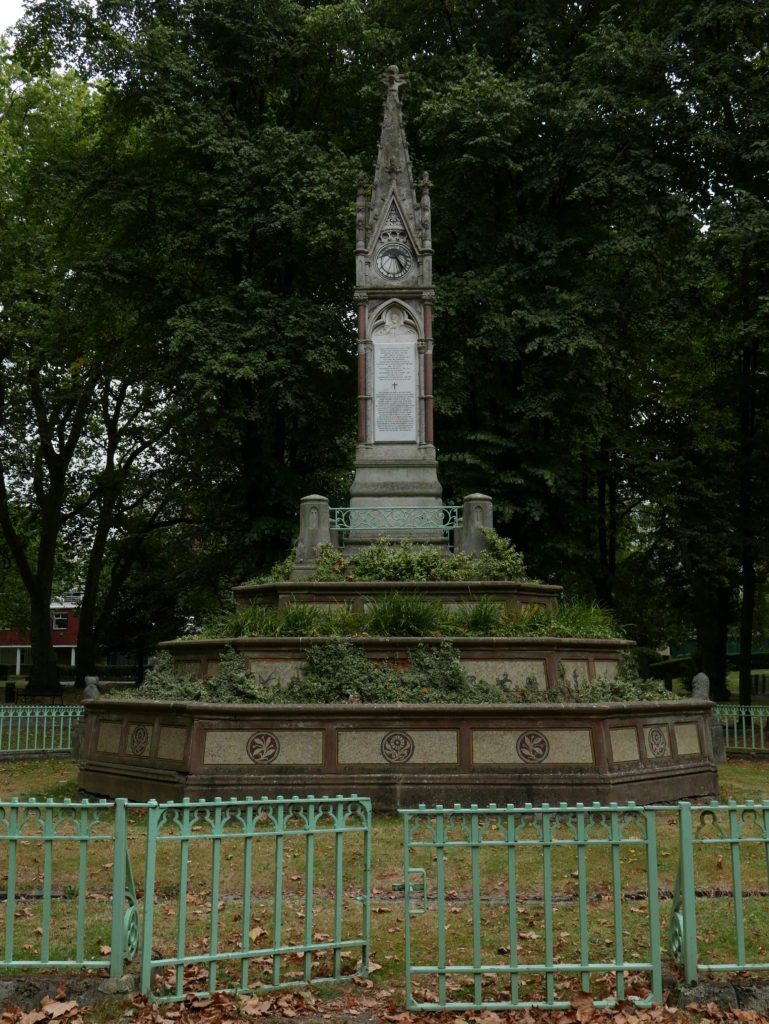
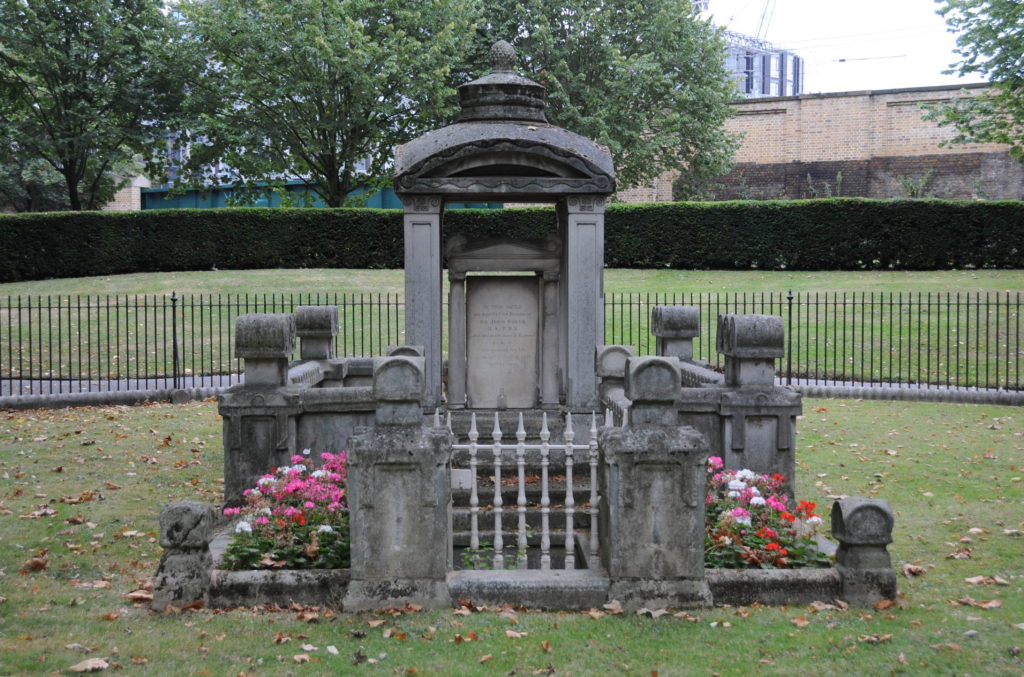
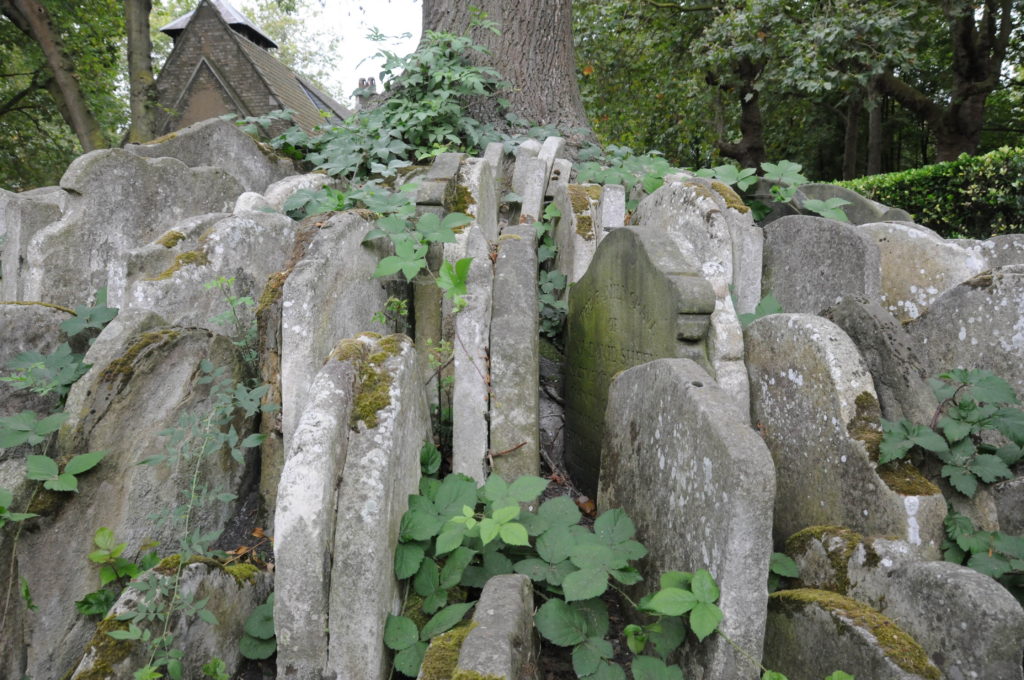
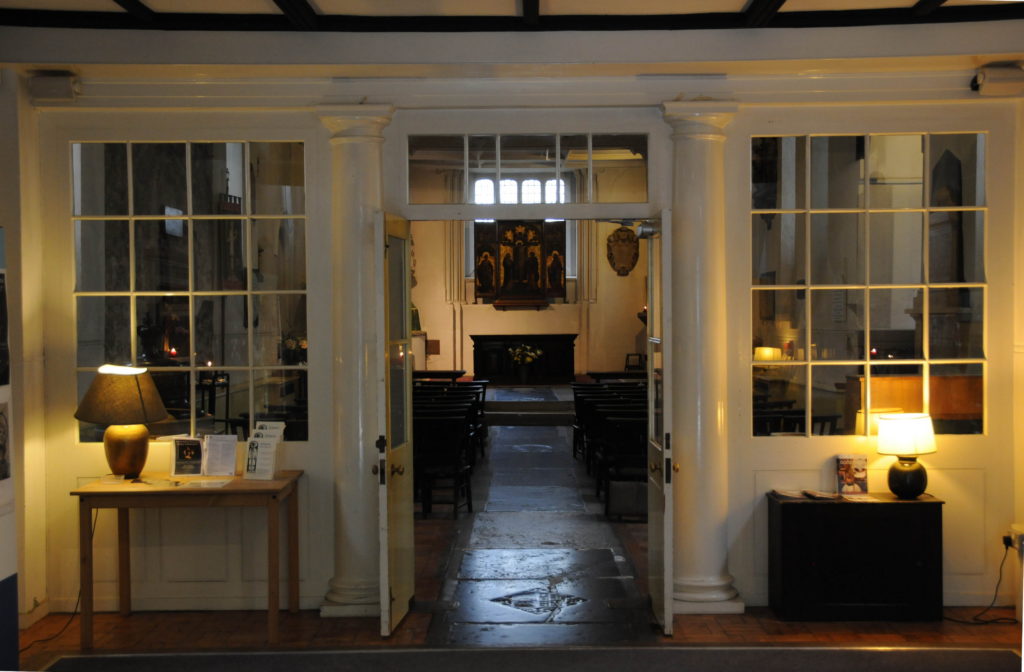
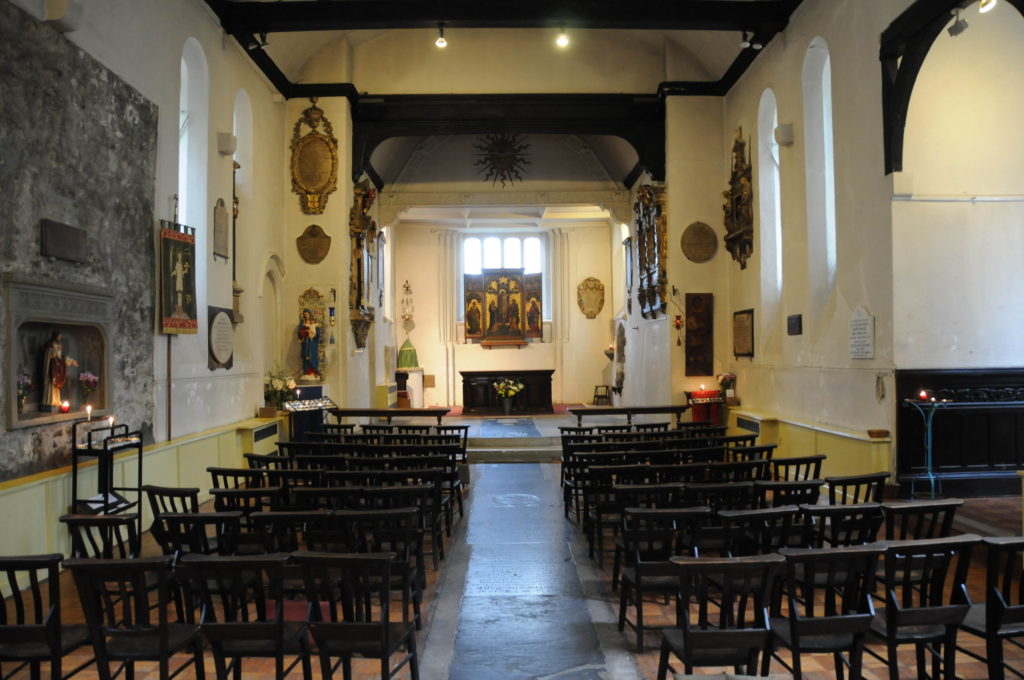
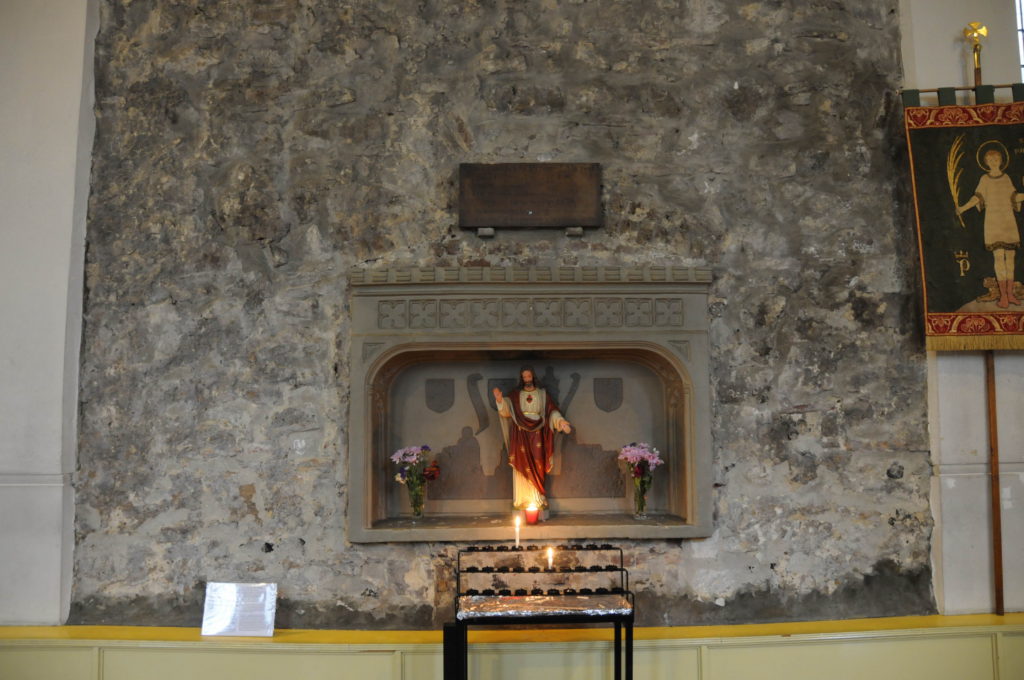
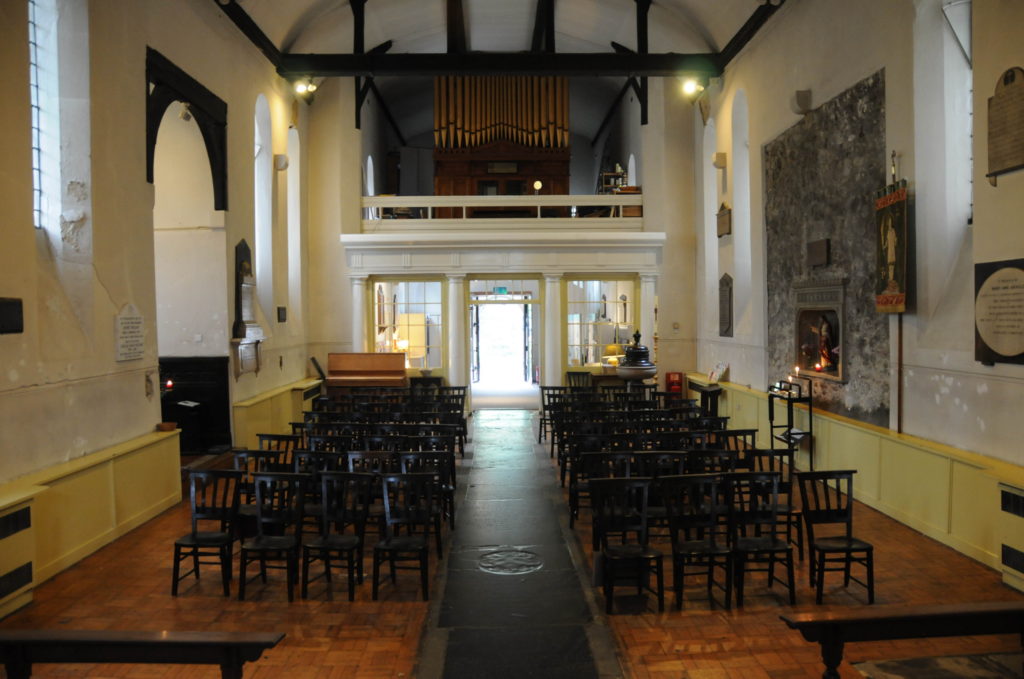
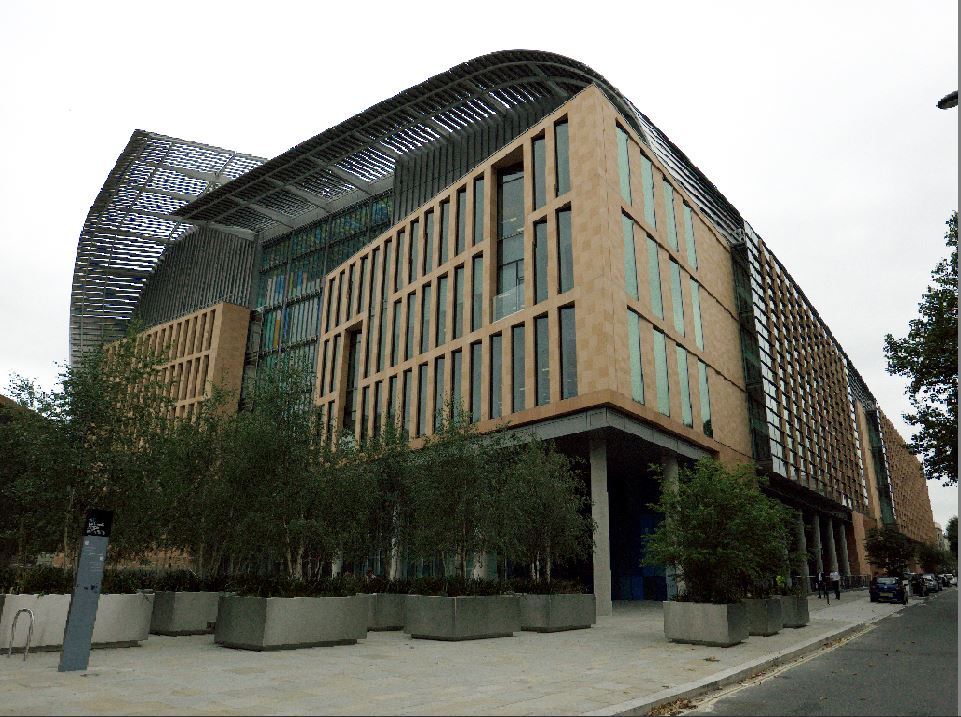
Fascinating as always. Thank you.
You may like to know that when St Pancras International was built there was further disturbance of the burial ground, documented by Museum of London Archaeology. The book may be out of print but possibly obtainable second hand.
http://www.mola.org.uk/publications/st-pancras-burial-ground-excavations-st-pancras-international-london-terminus-high
Thanks Anne, that looks an interesting book. I will look out for a second hand copy. The churchyard has suffered much disturbance over the years !
Howdy! The Purchese Street depot was built in 1898 by the Midland Railway. The depot took the form of drops – the coal fell from a wagon on the high level directly into dealers’ wagons avoiding the time and expense of transhipment but generating noise and dust. Last time I was up that way there was a rather nice red brick retaining wall. There was a flying bomb dropped around here and maybe that is why the place looks rather messy. 1940-41 damage was usually tidied up more neatly than that.
That is really interesting Keith, I did not know that was how it worked. You could well be right about the flying bomb. Perhaps that is what the signs around the square are about. I will check the LCC bomb damage maps and see if there is a record. Thanks.
Coal was held in a hopper, and the coal merchant would park the lorry underneath and hold an empty sack under the hopper outlet, press a pedal to open the hopper, allowing coal to fall into the sack, which was then stacked on the back of the lorry where they stood. Made loading a bit easier. My dad used this yard a lot. One day a fellow coalman had a seizure/fit whilst filling a sack and was just rooted to the spot with his foot on the pedal as coal fell all over him. The other coalmen fortunately were on hand to save him. I was just a kid and was there with my dad that day, I’ll never forget it.
Thanks for the explanation Denis. I imagine that is an experience that you would not forget. How different it is now.
Thanks for a very interesting and varied post–nice juxtaposition of religious and commercial history. I am at the British Library regularly, and watched with interest as the Francis Crick Institute has been built. I haven’t gone north to the Old Church, though. You’ve inspired me to visit the area.
Thanks for the comment Alison. Well worth a short walk up to the Old Church, the church and the churchyard are both fascinating.
A fabulous post. Thank you.
A very interesting area indeed. Yes, it’s definitely worth the short walk to St Pancras Old Church and churchyard (now gardens) You’ll find some fascinating inscriptions on the old memorial stones and even a bench with a bit of pop history!
Camden Guides sometimes offer walks around that location, including the new Kings Cross regeneration area where you can still see the feint industrial heritage of the past in the new buildings.
There is one scheduled for Saturday 15 October, see their website for details
https://camdenguides.com
Gillian Tindall’s splendid The Fields Beneath (about Kentish Town) gives a lot of detail about St Pancras Old Church and is well worth a read.
I visited this church about three years ago. It was a glorious day and the photos I took were very satisfying. I knew nothing beforehand about this church but had discovered that for some of my ancestors it was their local church. My 3x great grandparents were married there on Christmas Day 1826. This caused consternation with the volunteers inside the church who were adamant that the building ceased to be used after the opening of the new St Pancras Church in 1822. I’ve since discovered that it continued as a chapel of ease after the function of parish church passed to the new building. It does raise the question as to why people continued to marry in the old church – perhaps tradition was more important than grandeur for some.
Interesting blog as ever David – thank you.
Love it that im not alone in following in my fathers footsteps ,when he died I found some 20 or so photos dating from the mid 50’s when he first came to live in London starting with his lodging rooms near St Pancras then kings cross ,tower of London ,Thames, tower bridge and some other London sites all dated on the back ,after he died I took time off work and took new photos of the exact spots on the very same days of the year some 50-60 years later ,I now have a very special photo album where on each page is my dads box brownie photo along with my up to date version ,who knows maybe Just maybe in 40-50 years time someone will go around again and take the same photos! now wouldn’t that be something!
Excellent post, as always.
St. Pancras Old Church is renowned for its high quality concerts (Vashti Bunyan sang here in 2014, for example) and is famous because The Beatles were photographed in the churchyard grounds in 1968 to promote Hey Jude and the White Album.
I visit Saint Pancras Old Church each time I am able to come to London; the reason why I visited it on the first time, was because I knew that John Walker’s tombstone ( a famous lexigrapher of his time, known as Elocution walker) was to be seen in the gardens; I wrote my PhD on Walker; I am coming back as regularly as I can for I enjoy the site so much; besides I also became interested in the fact that Hardy was connected to the place.
For those of you interested in the story of this site, I also find a few pages in Simon’s Bradley’s book St Pancras Station published in 2007/2011. Wonders of the World Series published. by Profile Books
My apologies if this reference has already been given ; when I read on screen , some information may escape my attention
Dr R Ranson, France
Mary Wollstonecraft, author of A Vindication of the Rights of Women and William Godwin, a philosopher of note himself, and parents of Mary Shelley, buried at Old St Pancras Churchyard. Lovely square tombstone. Also Johann Christian Bach, ‘the London Bach’, son of JS, and also a composer, and said to have influenced the young Mozart.
Hello,
sorry for my english, i’m french.
Maybe you can help me ?
I’m looking for informations on the St-Giles-in-the Fields chapel at the entrance to St Pancras Gardens. I’m looking for when it was destroyed and all informations . Thank you for your help.
St Giles-in-the Fields is different church a mile or more away from St Pancras near to Tottenham Court Road station see https://www.google.co.uk/maps/search/euston+station/@51.5156251,-0.1291166,18z?hl=en. It’s still very much there and in use.
The second map second down on your post, where Barclay street would of once being, do you know what is there now, and any idea of when the street was demolished, thank you …
I’m so happy to have found some history on this church with which it seems many of my ancestors are related. I grew up in South East London in the 60s. I now live extremely close to St Albans City Station and can be at St Pancras in 20 mins. I studied 17th and 18th century music manuscripts and books and always travelling into London. About 3 years I discovered many of my ancestors used this as their local church, living In Islington. Even then I hadn’t set foot in the Church. Rather due a visit now I think. Does anyone have any knowledge of how I could investigate the church registers and learn more about the graves that were moved? And very importantly the names of those buried? Will be doing a trip in half term so presumably I’d better contact the Vicar. Any ideas beyond that very welcome!
Thank you so much for providing so much info already. Very delighted. Annabella Tysall.
Are you sure that the drawing of St Pancras Wells with the old church in the background is from the 1850s? Other sites suggest a century earlier (1750 or 1780). It’s clear from old maps and other documentation that Somers Town would have erased that rural view long before the 1850s. See, for instance, prints of the Somers Town Dustheap mentioned by Dickens.
Your father’s photographs are fascinating, not least for their reminder of that coal-smoke atmosphere that dimmed urban centres until the passing of the Clean Air acts.
Hope to read more now I’ve discovered your site. Best wishes, Ann Pearson